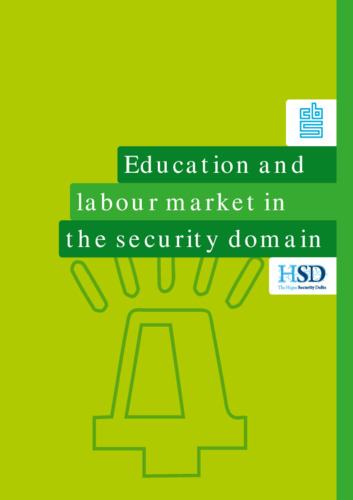- Home >
- Services >
- Access to Knowledge >
- Trend Monitor >
- Source of threat >
- Trend snippet: The share of students following security related courses increased between school year 2013/’14 and school year 2018/’19
Trends in Security Information
The HSD Trendmonitor is designed to provide access to relevant content on various subjects in the safety and security domain, to identify relevant developments and to connect knowledge and organisations. The safety and security domain encompasses a vast number of subjects. Four relevant taxonomies (type of threat or opportunity, victim, source of threat and domain of application) have been constructed in order to visualize all of these subjects. The taxonomies and related category descriptions have been carefully composed according to other taxonomies, European and international standards and our own expertise.
In order to identify safety and security related trends, relevant reports and HSD news articles are continuously scanned, analysed and classified by hand according to the four taxonomies. This results in a wide array of observations, which we call ‘Trend Snippets’. Multiple Trend Snippets combined can provide insights into safety and security trends. The size of the circles shows the relative weight of the topic, the filters can be used to further select the most relevant content for you. If you have an addition, question or remark, drop us a line at info@securitydelta.nl.
visible on larger screens only
Please expand your browser window.
Or enjoy this interactive application on your desktop or laptop.
The share of students following security related courses increased between school year 2013/’14 and school year 2018/’19
between school year 2013/’14 (9.3 percent) and school year 2018/’19 (10.6 percent).
This trend is mainly due to the increase in students studying at higher professional level, although there is also a slight increase at university level. Upper secondary vocational security education decreased however (from 7.1 percent in school year 2013/’14 to 5.7 percent in school year 2018/’19). This reduction was particularly severe between school years 2015/’16 and 2018/’19.
Generally, we see that the share of students following security related courses increased between school year 2013/’14 (9.3 percent) and school year 2018/’19 (10.6 percent). Figure 3.2.1 provides more detail on this trend, which is mainly due to the increase in students studying at higher professional level, although there is also a slight increase at university level. Upper secondary vocational security education decreased however (from 7.1 percent in school year 2013/’14 to 5.7 percent in school year 2018/’19). This reduction was particularly severe between school years 2015/’16 and 2018/’19. An important element of this reduction in upper secondary vocational education is the decrease of the number of students in upper secondary vocational legal courses. The number of participants in school year 2014/’15 was over 6,700 but this dropped to 263 in school year 2018/’19. This decrease is principally due to such courses no longer being offered. The popularity of higher professional legal courses has however risen drastically between school year 2017/’18 and 2018/’19. In between school years 2013/’14 and 2017/’18, the number of participants rose slightly from just over 14 thousand to almost 15 thousand, followed by a substantial jump to almost 22 thousand in school year 2018/’19.
In school year 2018/’19 133 thousand participants in education (11 percent) were enrolled in a security related programme. — Overall the number of participants in security related programmes at the higher professional and university level increased from 75 thousand participants in school year 2013/’14 to 104 thousand participants in school year 2018/’19. However, at upper secondary vocational level the number of students decreased from 37 thousand to 29 thousand over the same period. — The decrease in number of upper secondary vocational students in security related programmes was particularly pronounced for upper secondary vocational legal education; the number of students on these programmes decreased by 86 percent between school years 2017/’18 (almost 2 thousand) and 2018/’19 (around 250 participants). In contrast, the number of students in higher professional legal education in security related programmes increased by 45 percent (15 thousand to 22 thousand participants) over the same period. — Over time the number of participants in security related programmes in Engineering increased from almost 40 thousand participants in school year 2013/’14 to just over 54 thousand participants in school year 2018/’19. However, at upper secondary vocational level the number of students in Engineering slightly decreased over the same period.




